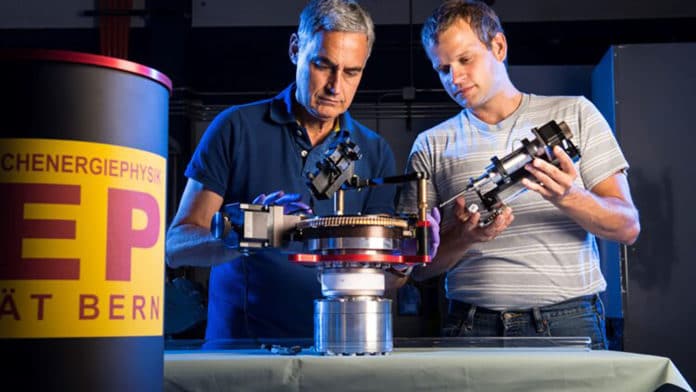Sterile neutrino, also known as the fourth neutrino, are hypothetical particles believed to interact only via gravity and not via any of the other fundamental interactions of the Standard Model.
For two decades, these particles have remained a promising explanation for anomalies seen in earlier physics experiments.
In the MicroBooNE experiment, an international team from the United States, with leadership from a UK team funded by the Science and Technology Facilities Council (STFC), offers results that cast doubt on the existence of the sterile neutrino. The MicroBooNE is a 170-ton neutrino detector.
The MicroBooNE experiment at Fermilab was designed to follow up on earlier hints of neutrinos behaving oddly, but the negative result deals a blow to the idea of such a new elementary particle.
Using advanced technology, scientists recorded precise 3D images of neutrino events. They then examined the particle interactions in detail. Four complimentary analyses released by the experiment deal a blow to the fourth neutrino hypothesis.
These four analyses did not show any sign of sterile neutrino. Instead, the results go with the Standard Model, which suggests three types of neutrinos only.
Professor Justin Evans, from the University of Manchester, is co-spokesperson of the experiment and has been leading this analysis for the past two years.
He said: “What we have achieved here with MicroBooNE is a transformative step for the field of neutrino physics.”
“We have studied, with exquisite precision, the interactions of neutrinos traveling over short baselines, and we have revealed a clear picture in which we see no suggestion of a fourth neutrino.”
“This heralds the start of a new era of precision for neutrino physics in which we will deepen our understanding of how the neutrino interacts, how it impacted the evolution of the universe, and what it can reveal to us about physics beyond our current Standard Model of how the universe behaves at the most fundamental level.”
Dr. Andrzej Szelc, from the University of Edinburgh, is the UK Principal Investigator of MicroBooNE. He said: “The strange results from previous experiments have puzzled theorists and experimentalists alike for many years.”
“Now that we have seen no hint of a fourth neutrino, we have to take a step back and try to figure out what could be happening. These kinds of seemingly contradictory results have often led to great breakthroughs in the past, so this is an exciting time to be a neutrino physicist.”
“The MicroBooNE results would not have been possible without the contribution of UK scientists, post-docs, and crucially post-graduate students, who have made key contributions to the commissioning and operation of the MicroBooNE detector as well as the development of its simulation and reconstruction software.”
Professor Mark Thomson, Executive Chair of STFC and one of the first UK physicists to join MicroBooNE, said: “This much-awaited result is a significant step in our understanding of neutrinos. This extremely challenging measurement is also essential because the MicroBooNE experiment used new technology to record detailed images of individual neutrino interactions.”
“The successful use the liquid argon imaging technology is a significant stepping stone towards DUNE.”
“Once complete by the end of this decade, DUNE will use several detectors each of the size of an extra-deep Olympic swimming pool, but with liquid argon replacing the water, to measure in detail the behavior of neutrinos.”
These results act as a turning point in neutrino research. As the evidence for sterile neutrinos becomes weaker, scientists explore other possibilities for anomalies in perceived neutrino behavior.
